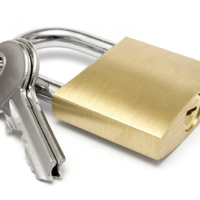Many times as I connect to the Internet I realize that I don’t establish a connection. My modem and router (Linksys BEFSX41) are on and connected, but still I can’t reach the Internet. The purpose of this post is to discuss the steps I take to bringing my modem, router and computer back online.
Note: This post assumes that you know how to log into your router and know where specific settings, such as the IP addresses are displayed.
Reset the Equipment
Before changing the settings, you should first reset all equipment as the first step. The following steps describe the order to reset the equipment:
- Turn off the computer.
- Turn off or unplug the router.
- Turn off or unplug the modem.
- Wait 5 seconds.
- Plug in the modem and wait for it to come back online.
- Plug in the router and wait for it to come back online.
- Turn on the computer and login.
- Click Start->Run.
- Type cmd in the Run dialog box and press OK.
- At the DOS command prompt type ipconfig /renew.
- Check to see if you once again have a connection to the Internet. If you can’t get an Internet connection then continue on to the next section.
Checking Router Connectivity
In this section we will check to ensure that the router has an IP address from your Internet Service Provider (ISP).
- Open up a Web browser and navigate to your router setup.
- Once the setup loads, navigate to the page that displays the IP address assigned by your ISP. For my Linksys router is shown by clicking the Status menu item.
- There may be buttons or links to release and renew the IP address. First, release the address, and then renew it. For my Linksys router, I first click the DHCP Release button and then the DHCP Renew button.
- An Internet or IP address should now be displayed in the page. If it doesn’t, then check to ensure that the router is connected to the modem and perform the previous step again. If you still don’t get an IP address then skip the next steps and continue directly with the next section.
- Click Start->Run.
- Type cmd in the Run dialog box and press OK.
- At the DOS command prompt type ipconfig /renew.
- Check to see if you once again have a connection to the Internet. If you can’t get an Internet connection then continue on to the next section.
Computer to Modem Connection
This section will determine if you can actually get an IP address from your modem, which would mean that there is a problem with the router. Follow the next few steps to perform the connection:
- Disconnect the cable connecting the router and the computer from the computer.
- Disconnect the cable connecting the modem and the router from the router.
- Connect the cable from the modem directly into the network card in your computer. Plug the cable into the same location as the router was connected into.
- Click Start->Run.
- Type cmd in the Run dialog box and press OK.
- At the DOS command prompt type ipconfig /renew.
- Check to see if you once again have a connection to the Internet. If you don’t then call your ISP technical support number and inform them of a problem. If you do, then there may be an issue with your router. Continue to the next section to see if the router problem can be fixed.
- Before continuing, however, ensure that you plug in all the cables as previous to following the steps in the section. This means that the connection should be: modem->router->computer.
Troubleshooting the Router
Up to this point we have reset all the equipment, tested the router, and the modem. It has been determined that the problem may be with the router. This section will attempt to solve the issue.
- If you closed the Web browser from a previous section then open a Web browser and navigate to your router’s setup.
- Navigate to the page containing your Internet Setup. For my router it is the first page that is displayed.
- Your setup hear depends on your ISP. Since I have cable as my Internet connection I make sure that setup is set to Obtain an IP automatically. If you have broadband dialup, you may need to select PPPoE and specify a user name an password. Check with the documentation provided by your ISP to determine which setting you should use.
- Ensure that DHCP on the router is enabled.
- Ensure that the number of IP addresses managed by the router can accommodate the number of computers that will be connected to it.
- Save any setting changes you made.
- Click Start->Run.
- Type cmd in the Run dialog box and press OK.
- At the DOS command prompt type ipconfig /renew.
- Check to see if you once again have a connection to the Internet. If you can’t, then continue to the next step.
- At this point you should try resetting the router to factory defaults and try the previous four steps again. Please read the documentation that came with your router on resetting it.
- If it still doesn’t work then there could be a hardware issue with the router. If you just bought it, return it to the store and get a new replacement. If it is an older router, you may need to buy a new one.
Summary
This post described how to troubleshoot a broadband Internet connection. I hope that the tips provided here have help to solve connection issues that you may be having.
